Themed collection In honour of Bernard Meunier

Introduction to the themed issue in honour of Bernard Meunier
The guest editors introduce the themed issue in honour of Bernard Meunier.
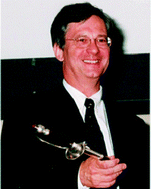
New J. Chem., 2013,37, 3329-3330
https://doi.org/10.1039/C3NJ90038J
Organometallic approach for the synthesis of nanostructures
The concepts and techniques of organometallic chemistry are powerful tools for the controlled synthesis of well-defined nanostructures for application in various domains.
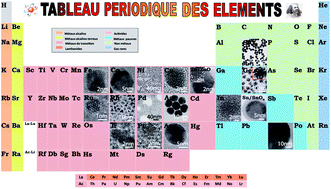
New J. Chem., 2013,37, 3374-3401
https://doi.org/10.1039/C3NJ00650F
Positively charged phosphorus dendrimers. An overview of their properties
The properties of positively charged phosphorus-containing dendrimers for catalysis, bio-imaging, functional materials and nano-objects, but also for biology are reviewed.
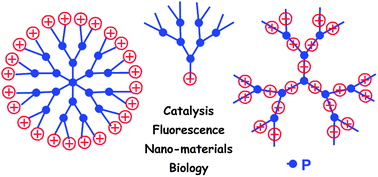
New J. Chem., 2013,37, 3358-3373
https://doi.org/10.1039/C3NJ00583F
Dendrimers as macromolecular tools to tackle from colon to brain tumor types: a concise overview
The efficiency of non-targeted and targeted drug-encapsulated dendrimers and dendrimer–drug conjugates to treat aggressive cancers is illustrated.
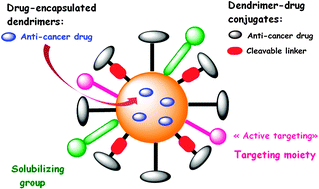
New J. Chem., 2013,37, 3337-3357
https://doi.org/10.1039/C3NJ00300K
Nanoparticles of molecule-based conductors
Molecular conductors and superconductors have become available as nanoparticles, opening new opportunities of research in fundamental physics and for electronic applications.
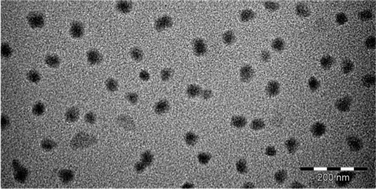
New J. Chem., 2013,37, 3331-3336
https://doi.org/10.1039/C3NJ00555K
Synthesis and characterization of eight new tetraphenylporphyrins bearing one or two ferrocenes on the β-pyrrole positions
Eight new ferrocenyl beta-substituted porphyrins were synthesized by the Sonogashira reaction. The compounds show an electronic conjugation between the two chromophores and are potentially useful as dyes in DSSC photovoltaic cells.
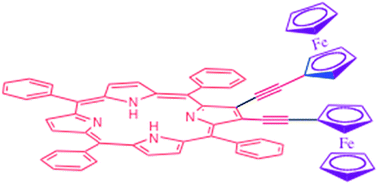
New J. Chem., 2013,37, 3416-3419
https://doi.org/10.1039/C3NJ00896G
Cyclohexene as a substrate probe for the nature of the high-valent iron-oxo oxidant in Fe(TPA)-catalyzed oxidations
FeIVO(TPA) and FeVO(TPA) oxidants react differently with cyclohexene to afford respectively products of allylic C–H and C![[double bond, length as m-dash]](https://www.rsc.org/images/entities/char_e001.gif) C bond attack.
C bond attack.
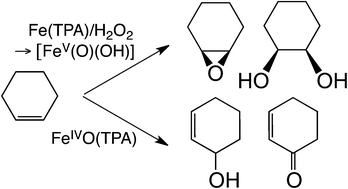
New J. Chem., 2013,37, 3411-3415
https://doi.org/10.1039/C3NJ00524K
Stereochemical aspects of nucleophilic addition reactions to alkoxycarbene cations of the iron chiral auxiliary [(η5-C5H5)Fe(CO)(PPh3)]
Nucleophilic addition reactions to a range of alkoxy carbene complexes, incorporating the iron chiral auxiliary [(η5-C5H5)Fe(CO)(PPh3)], gave the corresponding alkyl substituted complexes in good yield with moderate to high diastereoselectivity.
![Graphical abstract: Stereochemical aspects of nucleophilic addition reactions to alkoxycarbene cations of the iron chiral auxiliary [(η5-C5H5)Fe(CO)(PPh3)]](/en/Image/Get?imageInfo.ImageType=GA&imageInfo.ImageIdentifier.ManuscriptID=C3NJ00518F&imageInfo.ImageIdentifier.Year=2013)
New J. Chem., 2013,37, 3406-3410
https://doi.org/10.1039/C3NJ00518F
Redox-active cyclopentadienyl Ni complexes with quinoid N-heterocyclic carbene ligands for the electrocatalytic hydrogen release from chemical fuels
The title complex is an electro-active dehydrogenation catalyst.
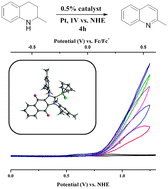
New J. Chem., 2013,37, 3402-3405
https://doi.org/10.1039/C3NJ00276D
Dinuclear heme and non-heme metal complexes as bioinspired catalysts for oxidation reactions
Dinuclear metal complexes inspired by cytochrome c oxidase and nitric oxide reductase active sites as catalysts for peroxidase-like activity.
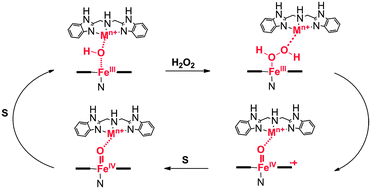
New J. Chem., 2014,38, 518-528
https://doi.org/10.1039/C3NJ01279D
The protonation state of trans axial water molecule switches: the reactivity of high-valent manganese-oxo porphyrin
Easy axial ligand tuning of a biomimetic metal-oxo catalyst by adjustment of the pH of the reaction medium.

New J. Chem., 2013,37, 3581-3590
https://doi.org/10.1039/C3NJ01004J
Molecular tectonics: chiral 1- and 2-D zinc coordination networks based on chiral porphyrins bearing pyridyl and ethynylpyridyl appended units
Chiral porphyrin based ligands bearing two peripheral pyridyl groups and two chiral centres form self-complementary chiral metallatectons in the presence of Zn(II). The latter self-assemble into chiral 1- and 2-D coordination networks.
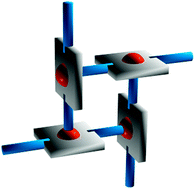
New J. Chem., 2013,37, 3549-3558
https://doi.org/10.1039/C3NJ00591G
Desulfurization processes of thiosemicarbazonecopper(II) derivatives in acidic and basic aqueous media
Desulfurization processes of thiosemicarbazonecopper(II) species generate copper(II) derivatives with HS−, py-COO− or NCS− anions.
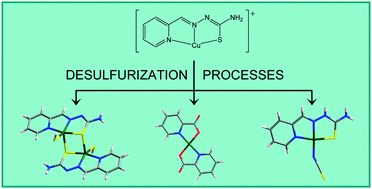
New J. Chem., 2013,37, 3568-3580
https://doi.org/10.1039/C3NJ00321C
Synthesis and in vitro cytotoxicity of deoxyadenosine–bile acid conjugates linked with 1,2,3-triazole
The HdA-CDC conjugate was synthesized via a ‘click’ chemistry approach, it strongly and selectively inhibited cell proliferation and induced apoptosis in cultured human leukemic K562 cells.
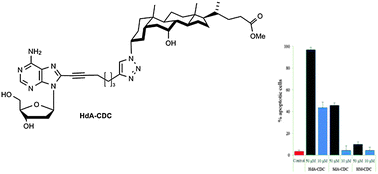
New J. Chem., 2013,37, 3559-3567
https://doi.org/10.1039/C3NJ00513E
Evidence of the unprecedented conversion of intermolecular proton to water bridging of two phosphoryl ruthenium complexes
X-ray crystal structures, electrochemical and photophysical properties of bridged-proton bimetallic phosphoryl complex [{[Ru](Ph2P![[double bond, length as m-dash]](https://www.rsc.org/images/entities/char_e001.gif) O)}2H][PF6]3 and its corresponding H-bonded water complex [{[Ru](Ph2P
O)}2H][PF6]3 and its corresponding H-bonded water complex [{[Ru](Ph2P![[double bond, length as m-dash]](https://www.rsc.org/images/entities/char_e001.gif) O)}2(H2O)][PF6]2.
O)}2(H2O)][PF6]2.

New J. Chem., 2013,37, 3543-3548
https://doi.org/10.1039/C3NJ00522D
From MOFs to zeolites : zirconium sites for epoxide rearrangement
The Lewis acidity of zirconium sites with different geometry is evaluated and active catalysts are presented for myrtanal (fragrance) synthesis.
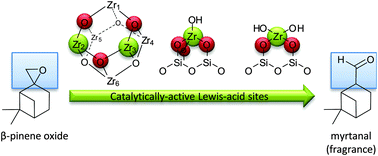
New J. Chem., 2013,37, 3496-3502
https://doi.org/10.1039/C3NJ00551H
π-Interactions as a tool for an easy deposition of meso-tetraferrocenylporphyrin on surfaces
π-Interactions represent a new opportunity to deposit tetraferrocenylporphyrin on Au and ITO and to investigate their properties on surfaces.
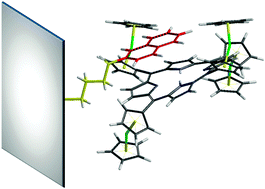
New J. Chem., 2013,37, 3535-3542
https://doi.org/10.1039/C3NJ00519D
Liposomes derivatized with tetrabranched neurotensin peptides via click chemistry reactions
Doxorubicin liposomes decorated with neurotensin tetramers are obtained by using a post-liposomal derivatization method based on a click-chemistry reaction.

New J. Chem., 2013,37, 3528-3534
https://doi.org/10.1039/C3NJ00596H
Extended H-bond networks based on guanidinium H-donors and [Zr(A)4]4− H-acceptor units: modulation of the assemblage and guest accessible volume by chemical design (A = oxalate, dihydrobenzoquinonate, chloranilate)
2D and 3D networks have been achieved by assembling [Zr(A)4]4− metallotectons and guanidinium cation derivatives. Several present open-framework architectures.
![Graphical abstract: Extended H-bond networks based on guanidinium H-donors and [Zr(A)4]4− H-acceptor units: modulation of the assemblage and guest accessible volume by chemical design (A = oxalate, dihydrobenzoquinonate, chloranilate)](/en/Image/Get?imageInfo.ImageType=GA&imageInfo.ImageIdentifier.ManuscriptID=C3NJ00520H&imageInfo.ImageIdentifier.Year=2013)
New J. Chem., 2013,37, 3476-3487
https://doi.org/10.1039/C3NJ00520H
Liberation of methyl acrylate from metallalactone complexes via M–O ring opening (M = Ni, Pd) with methylation agents
Methyl triflate (MeOTf) displays excellent activity in inducing the liberation of methyl esters from metallalactones (Ni, Pd) by electrophilic ring-opening followed by β-hydride elimination.
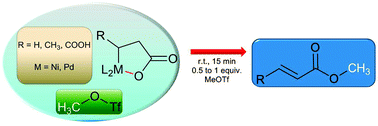
New J. Chem., 2013,37, 3512-3517
https://doi.org/10.1039/C3NJ00693J
Molecular materials for switchable nonlinear optics in the solid state, based on ruthenium-nitrosyl complexes
The molecular hyperpolarizability (β) of ruthenium-nitrosyl chromophores could vanish completely after a Ru(NO)/Ru(ON) isomerization.

New J. Chem., 2013,37, 3518-3527
https://doi.org/10.1039/C3NJ00558E
Highly cytotoxic diruthenium trithiolato complexes of the type [(η6-p-MeC6H4Pri)2Ru2(μ2-SR)3]+: synthesis, characterization, molecular structure and in vitro anticancer activity
16 examples of aromatic substituents R with IC50 values as low as 30 nanomolar (towards A2780 and A2780cisR cell lines).
![Graphical abstract: Highly cytotoxic diruthenium trithiolato complexes of the type [(η6-p-MeC6H4Pri)2Ru2(μ2-SR)3]+: synthesis, characterization, molecular structure and in vitro anticancer activity](/en/Image/Get?imageInfo.ImageType=GA&imageInfo.ImageIdentifier.ManuscriptID=C3NJ00476G&imageInfo.ImageIdentifier.Year=2013)
New J. Chem., 2013,37, 3503-3511
https://doi.org/10.1039/C3NJ00476G
Spin crossover polysaccharide nanocomposites
The matrix effect and maintaining of the bistability in 3 nm Hofmann clathrate [Fe(pz){M(CN)4}] (M = Ni2+, Pt2+, Pd2+) nanoparticles embedded into chitosan and alginate.
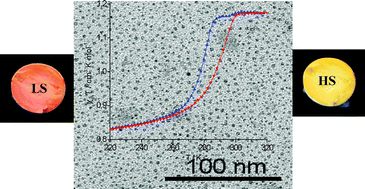
New J. Chem., 2013,37, 3420-3432
https://doi.org/10.1039/C3NJ00534H
In situ enzymatic generation of H2O2 from O2 for use in oxidative bleaching and catalysis by TAML activators
TAML activators perform oxidative catalysis when H2O2 is made by GO/O2/D-glucose and banana extract can be used instead of glucose.

New J. Chem., 2013,37, 3488-3495
https://doi.org/10.1039/C3NJ00525A
Phytotoxic effects of selected N-benzyl-benzoylhydroxamic acid metallo-oxygenase inhibitors: investigation into mechanism of action
Phytotoxic effects of a small group of arylhydroxamic acids were found to be partly caused by inhibition of p-hydroxyphenylpyruvate dioxygenase (HPPD).
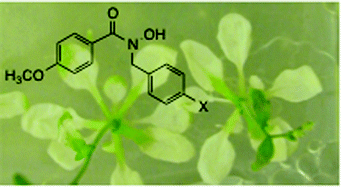
New J. Chem., 2013,37, 3461-3465
https://doi.org/10.1039/C3NJ00491K
A new family of Ru(II) complexes with a tridentate pyridine Schiff-base ligand and bidentate co-ligands : synthesis, characterization, structure and in vitro cytotoxicity studies
A series of six-coordinated Ru(II) compounds with a leaving chloride shows promising anticancer activity.
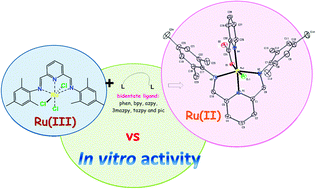
New J. Chem., 2013,37, 3450-3460
https://doi.org/10.1039/C3NJ00415E
Investigation of induction times, activity, selectivity, interface and mass transport in solvent -free epoxidation by H2O2 and TBHP: a study with organic salts of the [PMo12O40]3− anion
The solvent-free epoxidation of cyclooctene by aqueous H2O2 or TBHP catalyzed by organic salts of [PMo12O40]3− allows new considerations on the process (homogeneous vs. heterogeneous) and on mass transport/interfacial phenomena.
![Graphical abstract: Investigation of induction times, activity, selectivity, interface and mass transport in solvent-free epoxidation by H2O2 and TBHP: a study with organic salts of the [PMo12O40]3− anion](/en/Image/Get?imageInfo.ImageType=GA&imageInfo.ImageIdentifier.ManuscriptID=C3NJ00523B&imageInfo.ImageIdentifier.Year=2013)
New J. Chem., 2013,37, 3466-3475
https://doi.org/10.1039/C3NJ00523B
Endonuclease and exonuclease activities on oligodeoxynucleotides containing spiroiminodihydantoin depend on the sequence context and the lesion stereochemistry
The four-electron oxidation of guanine yields the stable product spiroiminodihydantoin that was digested from oligodeoxynucleotide constructs by phosphodiesterase I, phosphodiesterase II and nuclease P1 while monitoring the kinetics.
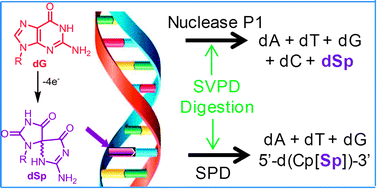
New J. Chem., 2013,37, 3440-3449
https://doi.org/10.1039/C3NJ00418J
Cross-dimerisation between different cisoid- and transoid-1,3-dienes at a ruthenium(0) centre
Reaction of [Ru(η4-cisoid-2,3-dimethyl-1,3-butadiene)(η4-1,5-COD)(NCMe)] with 1,3-butadiene gives the chelate bis(allylic)ruthenium(II) complex supine,prone-[Ru(η3:η3-2,3-dimethylocta-2,6-diene-1,8-diyl)(η4-1,5-COD)] (supine,prone-2da) in 75% isolated yield.

New J. Chem., 2013,37, 3433-3439
https://doi.org/10.1039/C3NJ00429E
About this collection
This themed collection, guest edited by Azzedine Bousseksou, consists of articles that have been dedicated to Dr Bernard Meunier to celebrate his scientific career on the occasion of his official retirement from the CNRS.